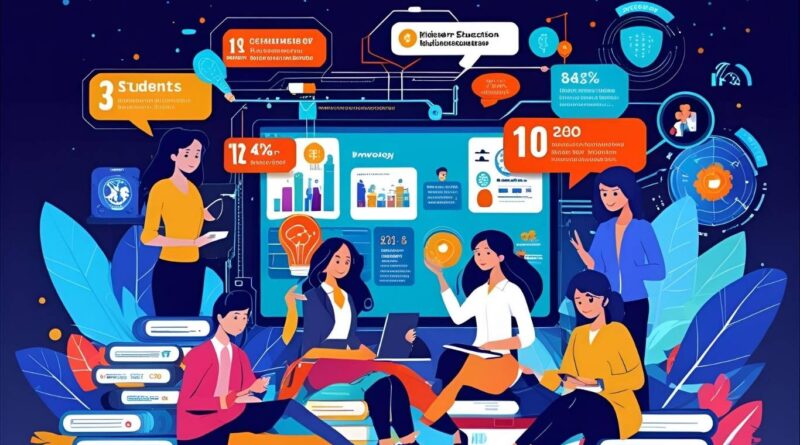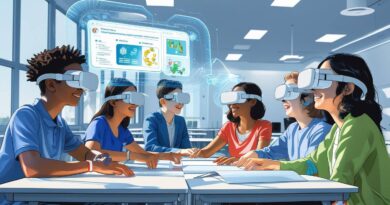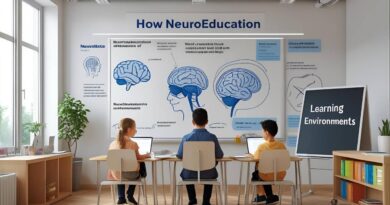11 Key Trends Shaping Higher Education in 2025
Introduction
Higher education in 2025 is not what it used to be even five years ago. With rapid advancements in technology, evolving student needs, and global challenges, the academic world is undergoing a major transformation. So, what exactly is shaping this future? Let’s dive into the 11 major trends redefining higher education in 2025—and how you can get ahead of them.
1. Blended Learning Becomes the Norm
The Hybrid Model of Physical and Digital Classrooms
Remember when Zoom classes felt like a temporary fix? Not anymore. In 2025, blended learning is the new standard. Students now move seamlessly between in-person lectures and online discussions, using platforms that allow for real-time interaction and collaboration.
Impact on Flexibility and Accessibility
Blended learning opens doors for students in rural areas, working professionals, and those with disabilities. Flexibility is no longer a luxury—it’s an expectation.
2. AI and Automation in Teaching & Learning
Personalized Learning Paths Using AI
AI doesn’t just mean robots—it means smarter, tailored education. Algorithms analyze student performance and recommend personalized content, making sure no one falls behind.
AI Tutors and Automated Grading
Gone are the days of waiting for feedback. AI tutors offer instant answers, while grading systems provide objective, consistent evaluations. This lets educators focus on mentoring rather than paperwork.
3. Rise of Microcredentials and Skill-Based Certifications
Demand for Job-Specific Skills
Degrees are still valuable, but employers now look for specific skills—think digital marketing, UX design, or AI programming. Microcredentials offer laser-focused knowledge and quicker results.
Acceptance by Top Employers

Big names like Google, Microsoft, and even government agencies are endorsing microcredentials. In 2025, your badge from Coursera or LinkedIn Learning could be your ticket to your next job.
4. Globalization and Cross-Border Learning
Virtual International Exchange Programs
Why travel thousands of miles when you can study with a global cohort from your living room? Virtual exchange programs are giving students cultural exposure and international education at a fraction of the cost.
Collaborative Global Classrooms
Group projects now include peers from Japan, Brazil, and Germany—all in one Zoom room. This interconnected learning builds global citizens, not just graduates.
5. Increasing Focus on Mental Health and Student Well-being
On-Campus and Virtual Support Systems
Universities are investing heavily in wellness apps, online therapy, and 24/7 support services. Mental health is finally receiving the attention it deserves.
Curriculum Integration of Emotional Intelligence
Emotional intelligence is now a teachable skill. Courses include mindfulness, stress management, and leadership with empathy—making students not just smarter, but wiser.
6. Data-Driven Decision Making in Universities
Use of Analytics for Student Success
From enrollment to graduation, everything is tracked. Universities use data to predict which students need help, which courses are most effective, and how to improve outcomes.
Real-Time Curriculum Optimization
Why wait for end-of-semester feedback? Real-time analytics allow professors to tweak content mid-course to better suit students’ needs.
7. Sustainability and Eco-Conscious Campuses
Green Architecture and Energy-Efficient Solutions
Campuses are going green—literally. Solar panels, zero-waste policies, and sustainable dining are becoming standard practices.
Courses Focused on Climate Change and Sustainability
Students are demanding action—and knowledge. Sustainability is no longer an elective; it’s a core part of the curriculum.
8. Gamification of Learning
Making Education More Engaging
Why just read about ancient Rome when you can explore it in a virtual game? Gamification uses storytelling, points, and rewards to make learning addictive.
Motivation Through Progress Tracking and Rewards
Leaderboards, badges, and achievements keep students motivated. It’s like Duolingo, but for economics or biology.
9. Lifelong Learning Culture
Adult Learners and Career Shifters
Learning doesn’t stop at 22. With changing careers and evolving industries, adults are heading back to class—online, part-time, and on-demand.
University as a Continuous Learning Partner
Colleges are no longer one-time institutions. They now offer subscriptions, lifetime access to resources, and alumni upskilling programs.
10. EdTech Startups and Private Sector Disruption
Competition for Traditional Universities
EdTech companies are moving fast—offering cheaper, smarter, and faster alternatives to traditional education. Think MasterClass, Skillshare, or Khan Academy with university-level content.
Innovation in Course Delivery
From holographic lectures to VR labs, the private sector is redefining what it means to “attend class.”
11. Policy and Regulatory Changes
Government Support for Remote and Hybrid Education
Many governments are now funding online infrastructure and offering grants to hybrid institutions. That means better resources for students and teachers alike.
Accreditation of Online Institutions
Online doesn’t mean second-tier anymore. Accredited online degrees carry the same weight as traditional ones—sometimes more, depending on the skills they teach.
Conclusion
The future of higher education isn’t a far-off fantasy—it’s already happening. These 11 trends show a clear shift toward flexibility, inclusivity, and innovation. Whether you’re a student, educator, or policymaker, adapting to these changes is the key to staying relevant and successful in 2025 and beyond. The classroom may look different, but the mission remains the same: empower minds and shape the future.
FAQs
1. What is the future of traditional degrees?
Traditional degrees will still matter, but they’ll be complemented by microcredentials and skill certificates that prove real-world expertise.
2. How will AI affect teaching jobs?
AI will assist, not replace, teachers. It automates grading and tailors lessons, letting educators focus on mentorship and creativity.
3. Are microcredentials replacing college degrees?
Not replacing, but redefining. Microcredentials are great for specific skills and career shifts, while degrees offer deeper academic grounding.
4. How are universities supporting mental health?
By offering virtual counseling, mental wellness apps, and integrating well-being into the curriculum, universities are prioritizing student health.
5. What should students do to prepare for these trends?
Stay adaptable, embrace online tools, focus on soft and tech skills, and never stop learning. The future belongs to the flexible.



